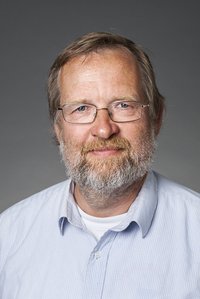Aarhus University Anniversary Foundation Prize of Honour for Pedagogics 2014
The Aarhus University Anniversary Foundation Prize of Honour for Pedagogics is awarded in recognition of outstanding and groundbreaking teaching at Aarhus University and is accompanied by a DKK 100,000 monetary award.
Associate professor Per Thorsen: A ground-breaking teacher

Associate Professor Per Thorsen places a high priority on making his expectations clear to his students and trying to get them to work at the very limit of their abilities. In recognition of his contribution to advancing university pedagogics, he is this year’s recipient of the Aarhus University Anniversary Foundation Prize of Honour for Pedagogics.
”The students have to know what I expect of them. If they’re in doubt about that, it often leads to poor results, and that leads to frustration.” Over the past six or seven years, Thorsen has worked intensively to ensure that his students at the Aarhus University School of Engineering understand and accept his expectations of them.
Thorsen, who teaches on the Bsc in Engineering programme, expects a lot from the time he spends with his students. These high goals apply both to students and to his own performance. To reach them, he incorporates video and digital tools in his teaching. This has earned him a reputation as a ground-breaking teacher who embraces new teaching tools long before they become mainstream.
Teaching close to reality
It was no accident that Thorsen chose a career in teaching. “Both my parents and siblings teach, so that’s most probably influenced me,” he explains. To begin with, however, Thorsen wanted to do a vocational degree, and he qualified as an electrician before taking his upper secondary school leaving examination followed by a degree in physics in Aarhus University At AU, Thorsen also did an industrial PhD in collaboration with Jysk Telefon/NKT, where he was employed for ten years.
“I wanted to get to know the material before I started theorising about it. And the practical dimension also has an influence on my approach to teaching,” explains Thorsen. In addition to teaching, since 2000 Thorsen has also worked in a private company’s development division.
In his teaching, he draws both on this and other businesses in the network he has developed. “It’s a luxury that I have access to fresh examples from the real world,” he says.
Assignments for students of all kinds
Thorsen want to push his students to achieve their utmost, so he places high importance on challenging them with a variety of types of assignments. “As a teacher, you often aim at the brightest top half of the class. But there also needs to be something for the students who have to struggle with the material more. They shouldn’t pass the course just because they can react instinctively to the problems I set them without deriving any real benefit from solving them,” he insists. Thorsen makes it very clear to his students that there may be assignments that only ten per cent of the class will be able to complete successfully. “But you’re still a good student even though you can’t solve the most difficult problems,” says Thorsen.
IT as a teaching and learning tool
Thorsen has always explored new technologies to figure out what works in a teaching context - and just as importantly, what doesn’t work. “I guess I’m kind of a nerd where that’s concerned,” admits Thorsen, whose experiments have also inspired his colleagues to incorporate IT into their teaching.
Over the years, he has experimented with using electronic tests in his teaching. As a supplement to the traditional exam, his students take a multiple choice test to demonstrate what they’ve gotten out of the course three times a semester. The results account for a third of the final grade for the course. “It sharpens their interest in the test, which is also useful because it means that students don’t have to review the entire course content before the final exam. At the same time, because I show them what I expect, the test helps us reach a common understanding of the expectations for the course,” explains Thorsen.
Incorporating video
For several years, Thorsen has also been producing his own videos for use in the classroom. In his videos, he reviews the most important topics to be covered before a lecture, and he expects that his students prepare for the lecture by watching them. The most important content from lectures and question-and-answer sessions is also recorded and uploaded to the web, and there are also videos that explain the solutions to problems.
These not only benefit students. They are also aimed at the many teaching assistants who go through assignments after lectures with the up to 200 students in attendance. “They need to be familiar with my approach to the assignments so that we avoid confusing the students,” explains Thorsen.
Not just for star talents
Teaching assistants can either be students or colleagues. “Especially during the first semester, we’re very careful to ensure that the new students are taught by experts in the field. Because while the course may not be at a very advanced level, this is when the students are most vulnerable,” says Thorsen.
Thanks to his own familiarity with a non-academic environment, Thorsen is particularly attentive to the needs of students from non-academic backgrounds. “I focus on the most disadvantaged and challenged 50 per cent of students. No teacher can ruin the bright ones, but you can very easily loose the less talented students in a class. You have to be aware that they face some real challenges and make sure that the programme also has some success criteria that they can live up to. They may not be the highest performers in a purely academic sense, but you’ll see that they can work miracles at a factory as BSc engineers.”